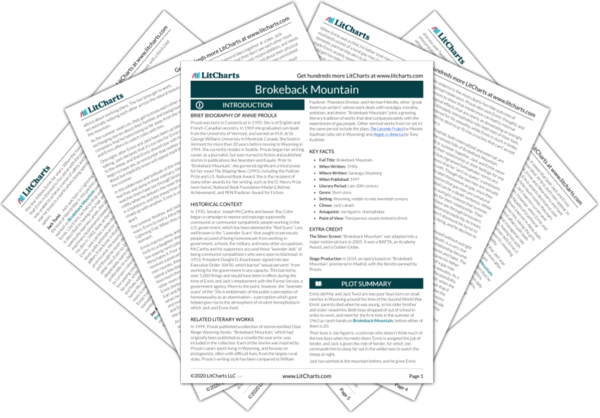Next
Summary
Brokeback Mountain Study Guide |
Next
Summary
|
Welcome to the LitCharts study guide on Annie Proulx's Brokeback Mountain. Created by the original team behind SparkNotes, LitCharts are the world's best literature guides.

The Silver Screen “Brokeback Mountain” was adapted into a major motion picture in 2005. It won a BAFTA, an Academy Award, and a Golden Globe.
Stage Production In 2014, an opera based on “Brokeback Mountain” premiered in Madrid, with the libretto penned by Proulx.